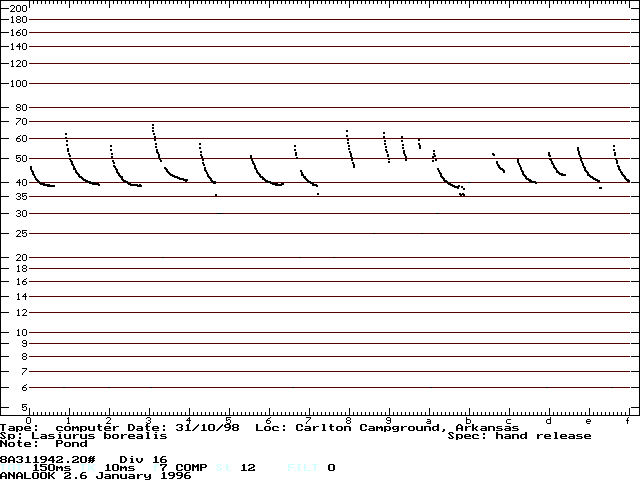
Description:
-
Weight: 1/4 - 1/2 oz. (9-15 g)
-
Body length: 2 1/8 in. (50-60 mm)
-
Wingspan: 11 - 13 in. (28-33 cm)
- Forearm: 1 3/8 - 1 3/4 in. (35-45 mm)
The eastern red bat is our most common tree bat. Males are brightly colored red and orange while females are slightly duller in appearance. Their tail membrane is fully furred, and both sexes have a white patch of fur on their shoulders and wrists.
Often, eastern red bats fly at dusk, making it easy to spot with their distinctive color patterns and long, pointed wings. They can fly up to 40 miles per hour!
Roosts:
-
Summer Roost: Eastern red bats are solitary and often roost among leaves in trees. Their preferred roosts are often in south facing, deciduous trees, 4-10 feet off the ground.
-
Winter Roost: In Maryland, eastern red bats migrate south for the winter, or go through short term periods of inactivity known as torpor. They often seek out leaf litter or hollow trees for shelter during torpor. Occasionally, on a warm winter day, eastern red bats can be seen in flight.
Diet:
Moths, crickets, flies, mosquitoes, true bugs, beetles, cicadas, and other insects.
Conservation:
Eastern red bats are listed
as species of greatest conservation need in Maryland. In addition, they are ranked as
vulnerable/apparently secure (S3S4).
Sounds:
Red Bat Spectrograph


Courtesy of Bat Call: Acoustic Call Library and Species Accounts
Echolocation Frequency: 39-50 kHz
Photo by: Dr. J. Scott Altenbach
Return to Field Guide to Maryland Bats